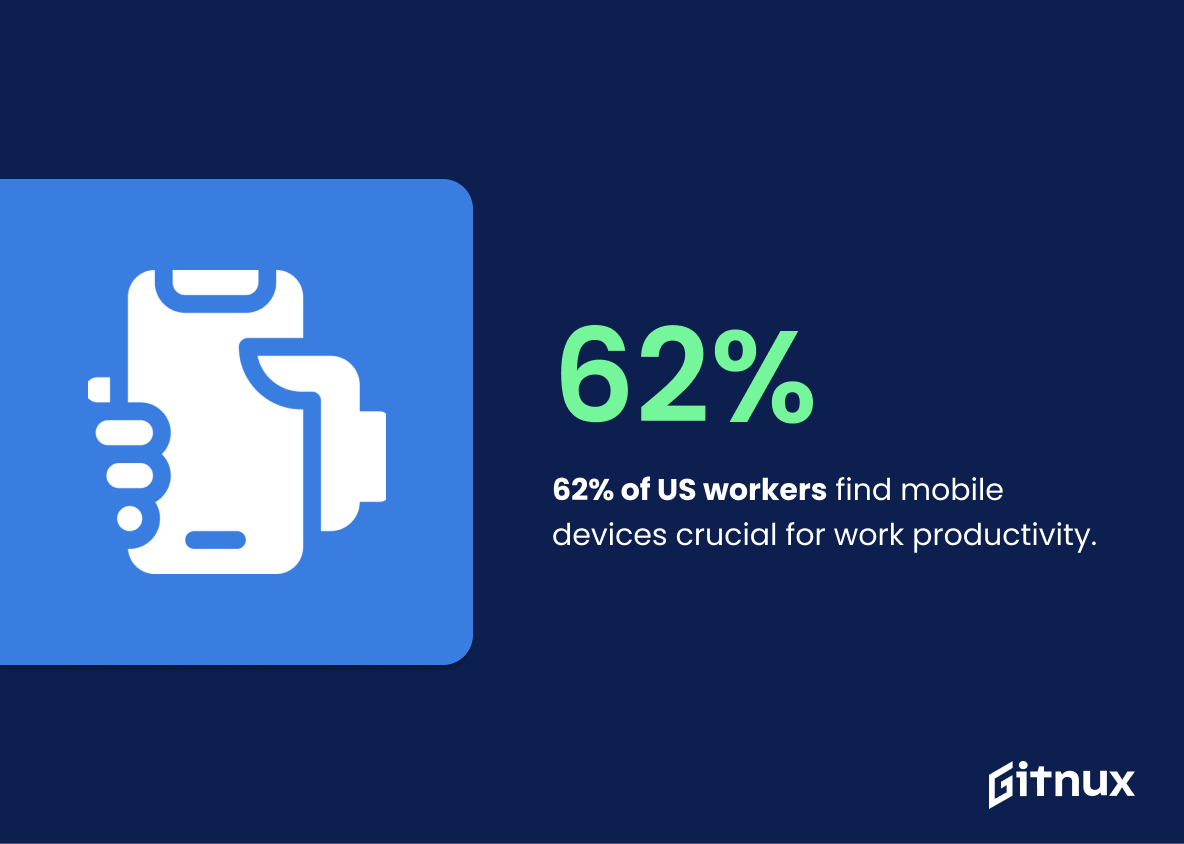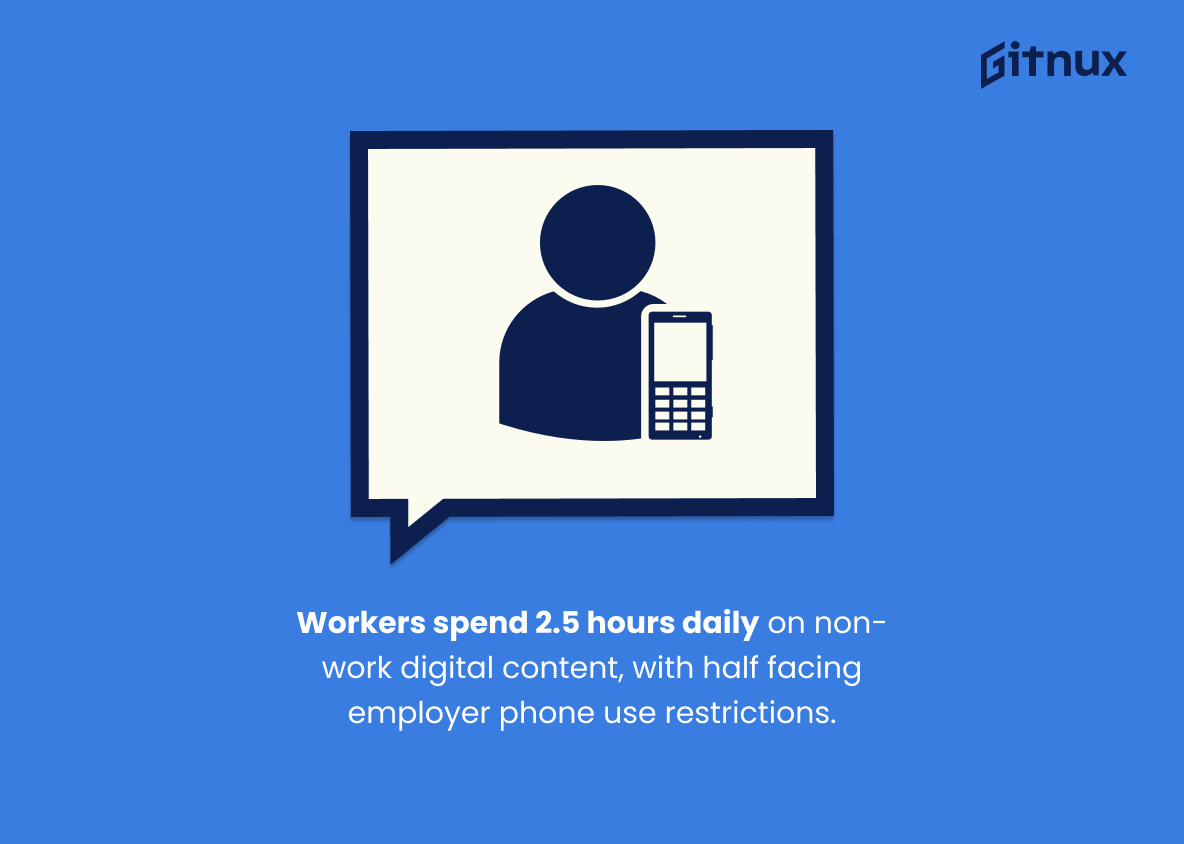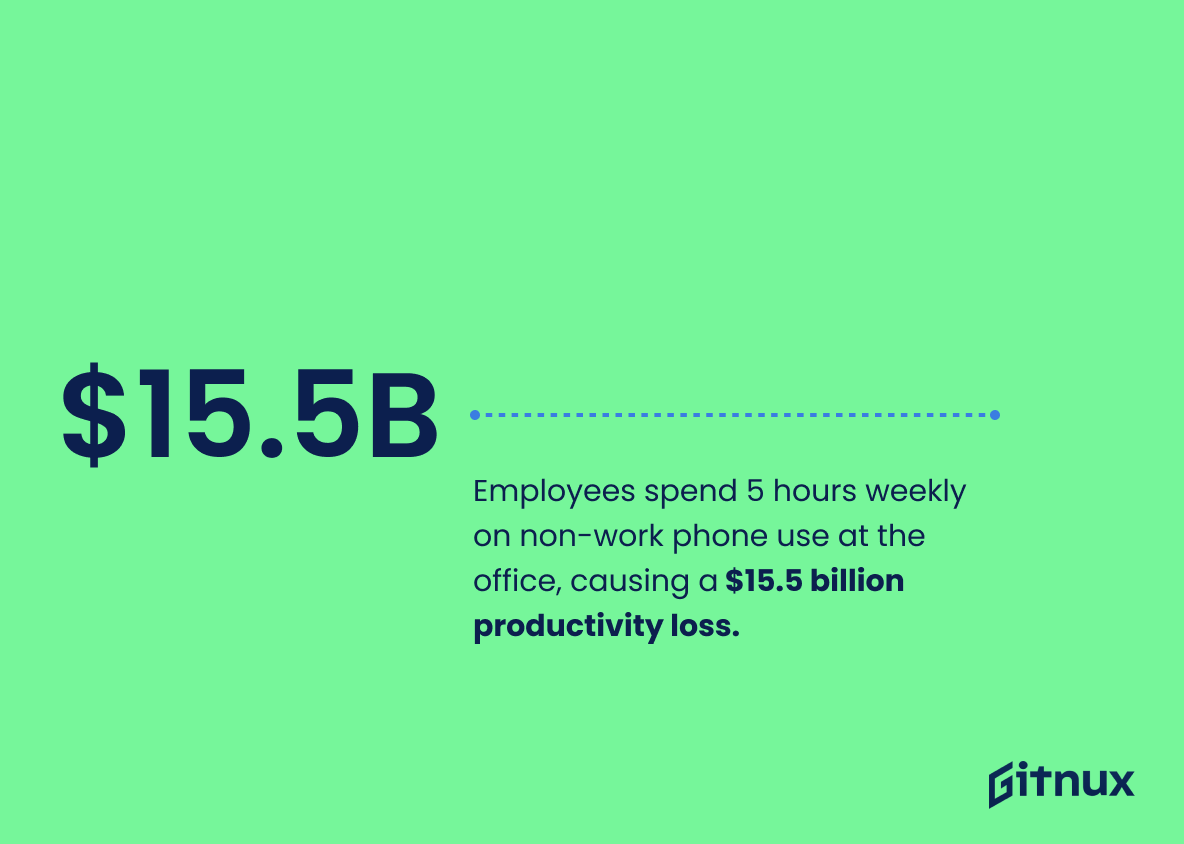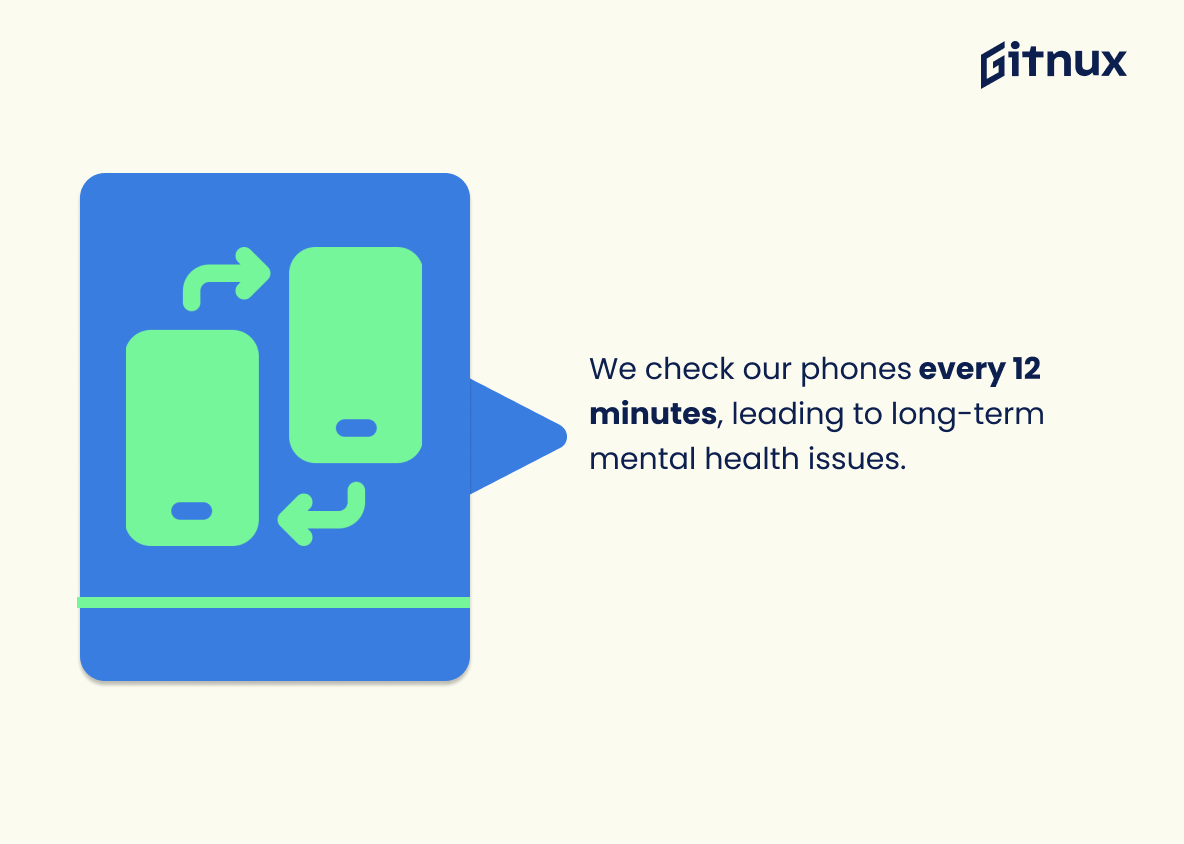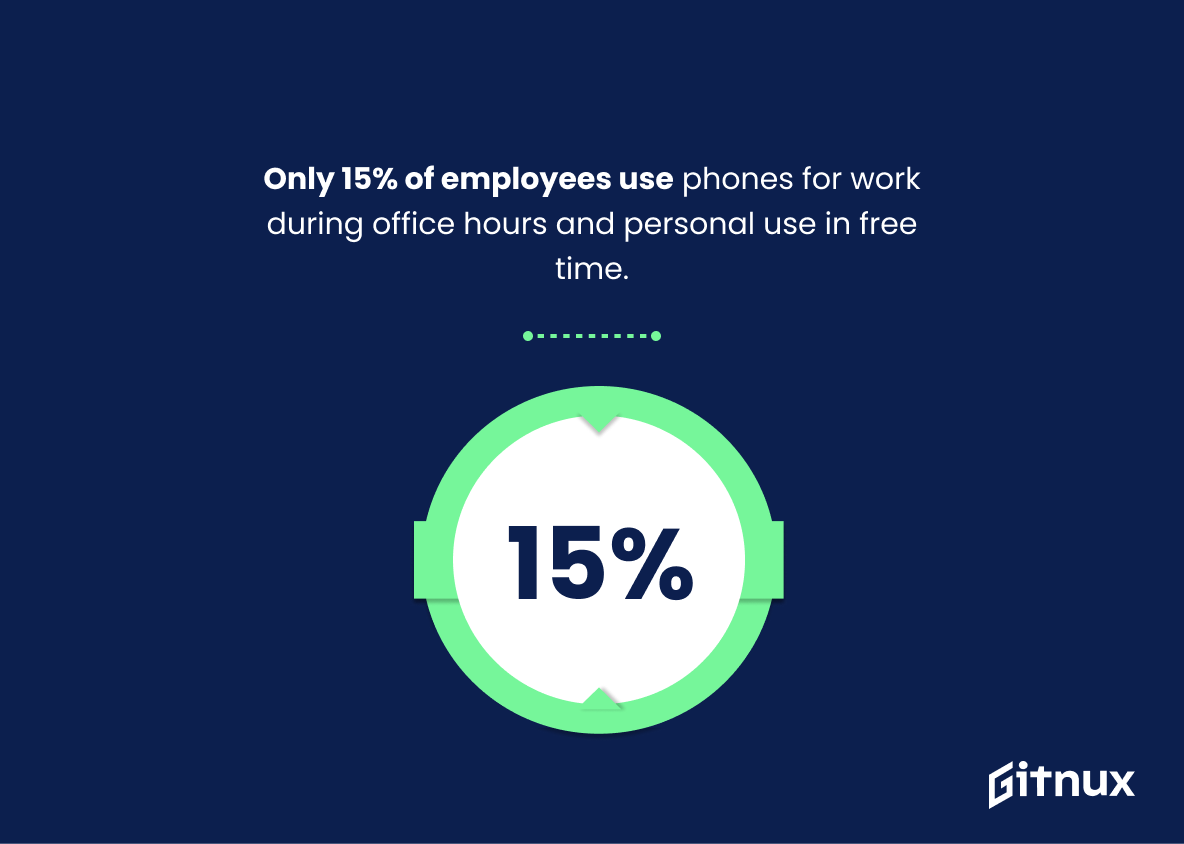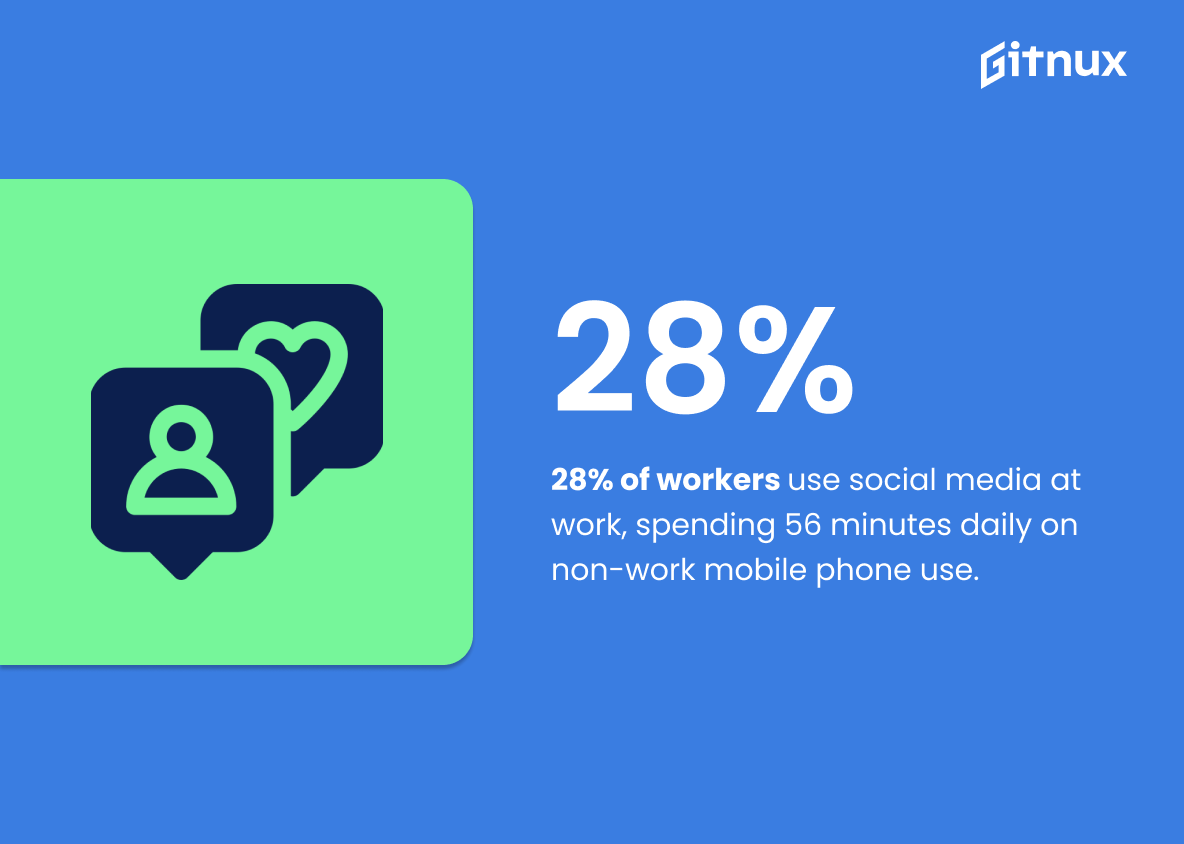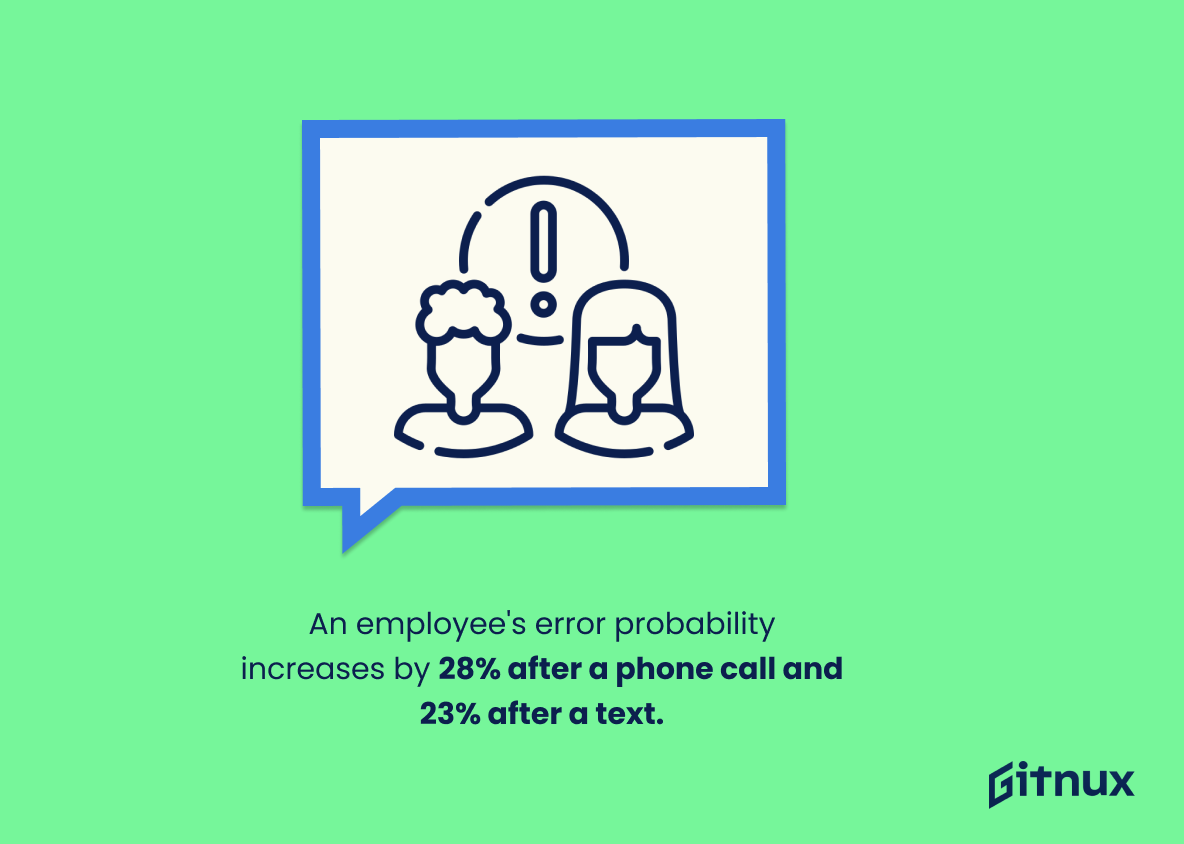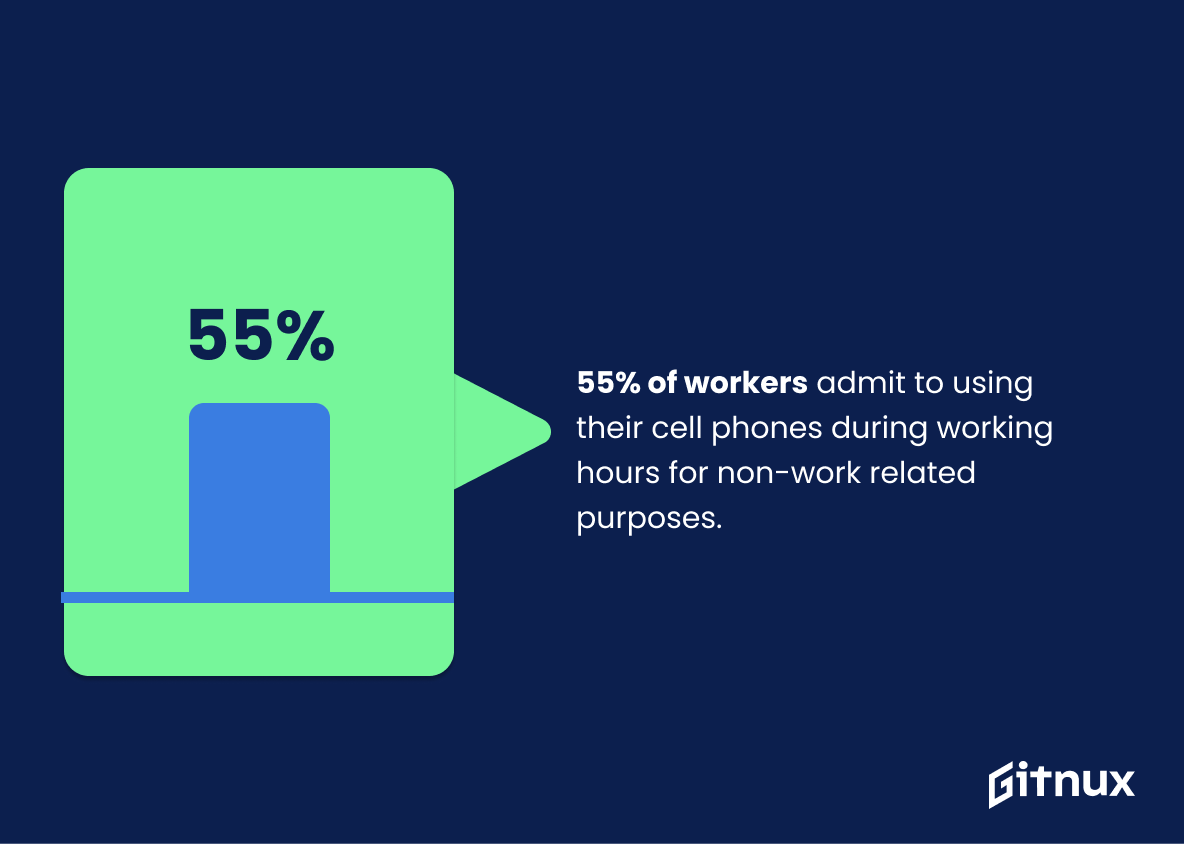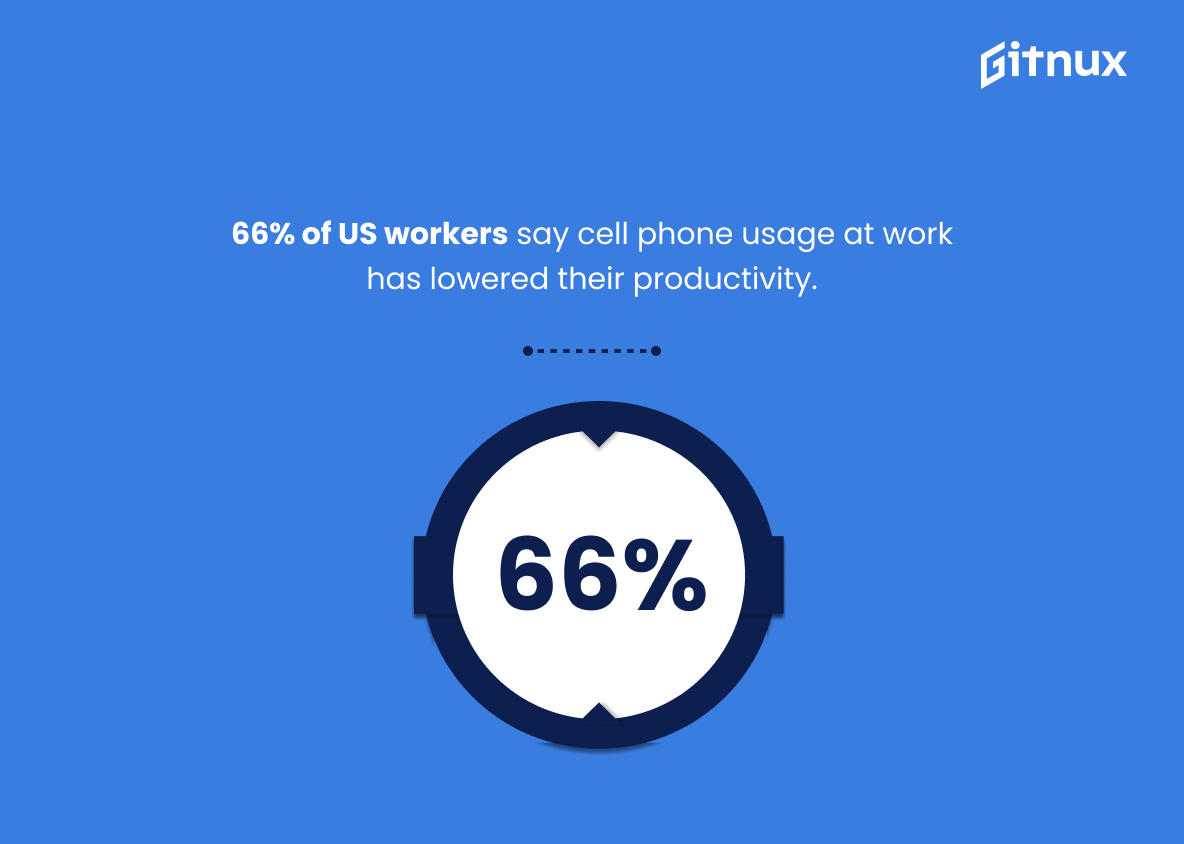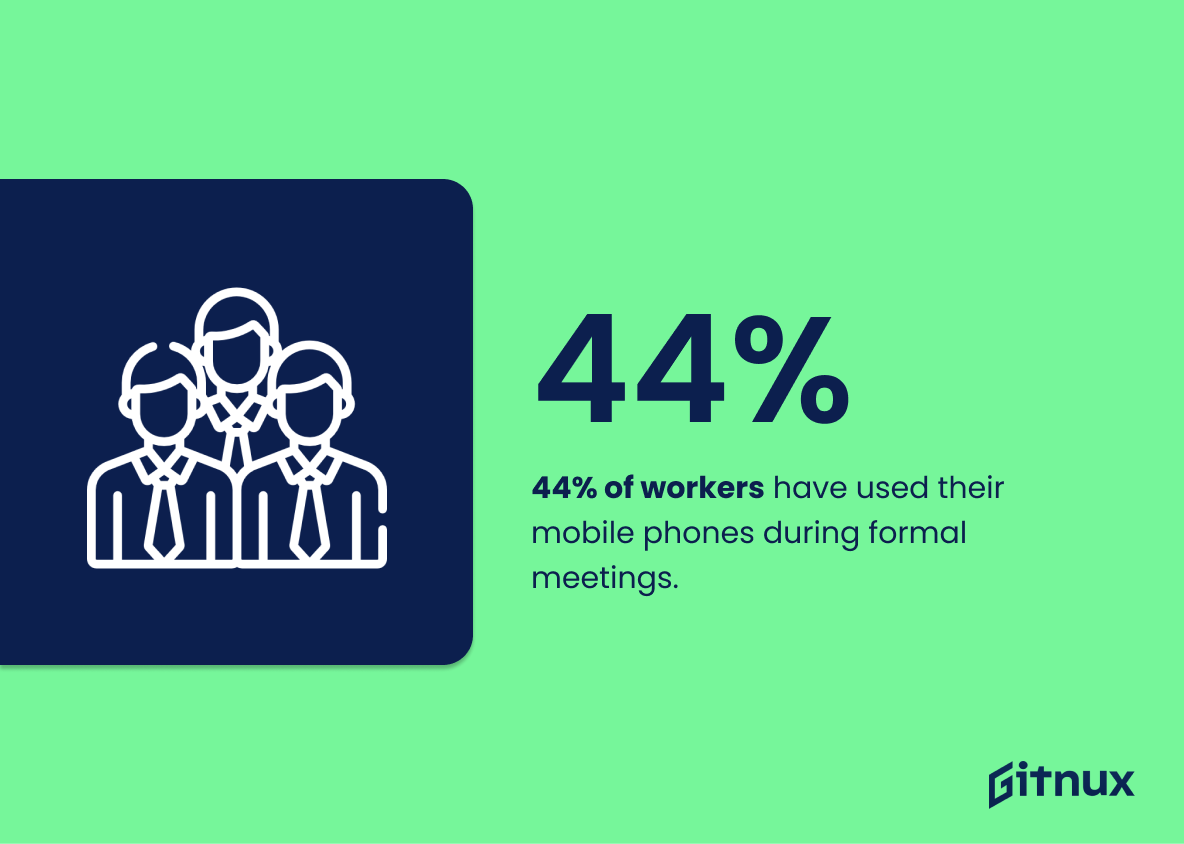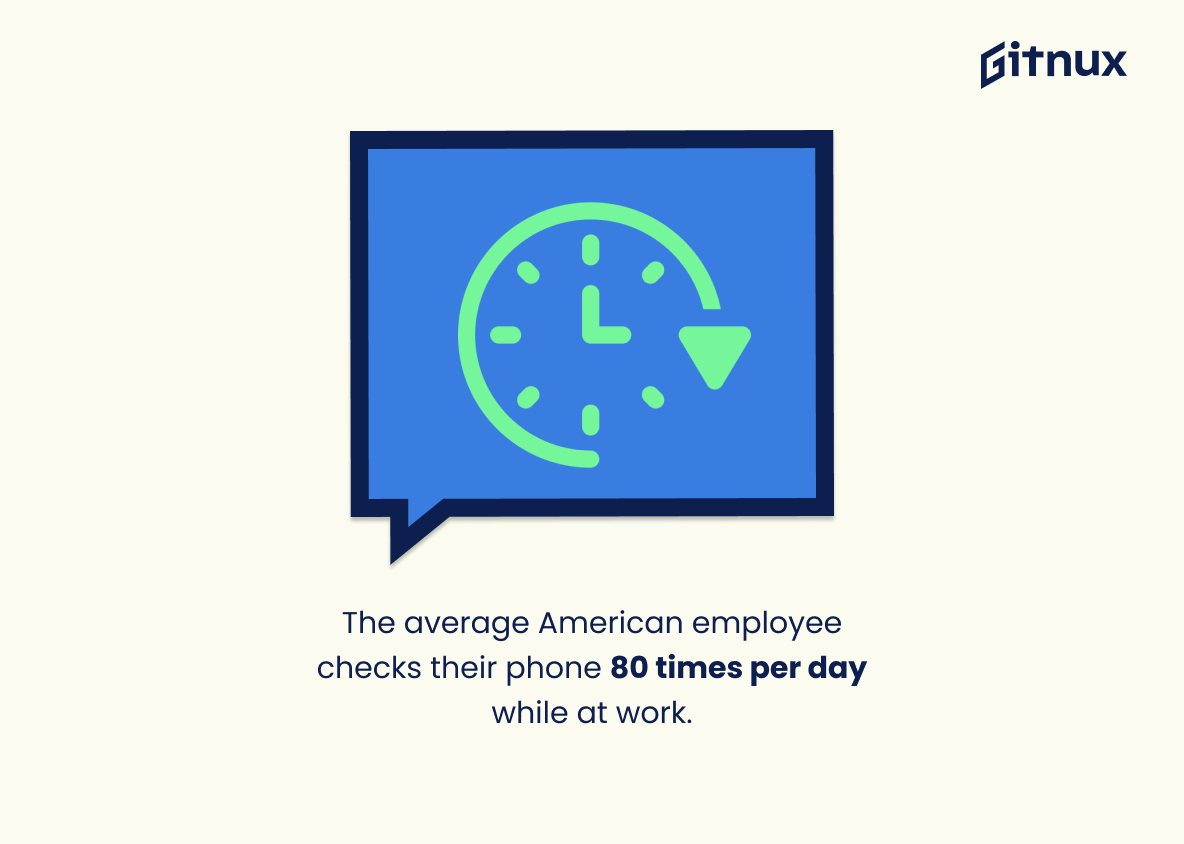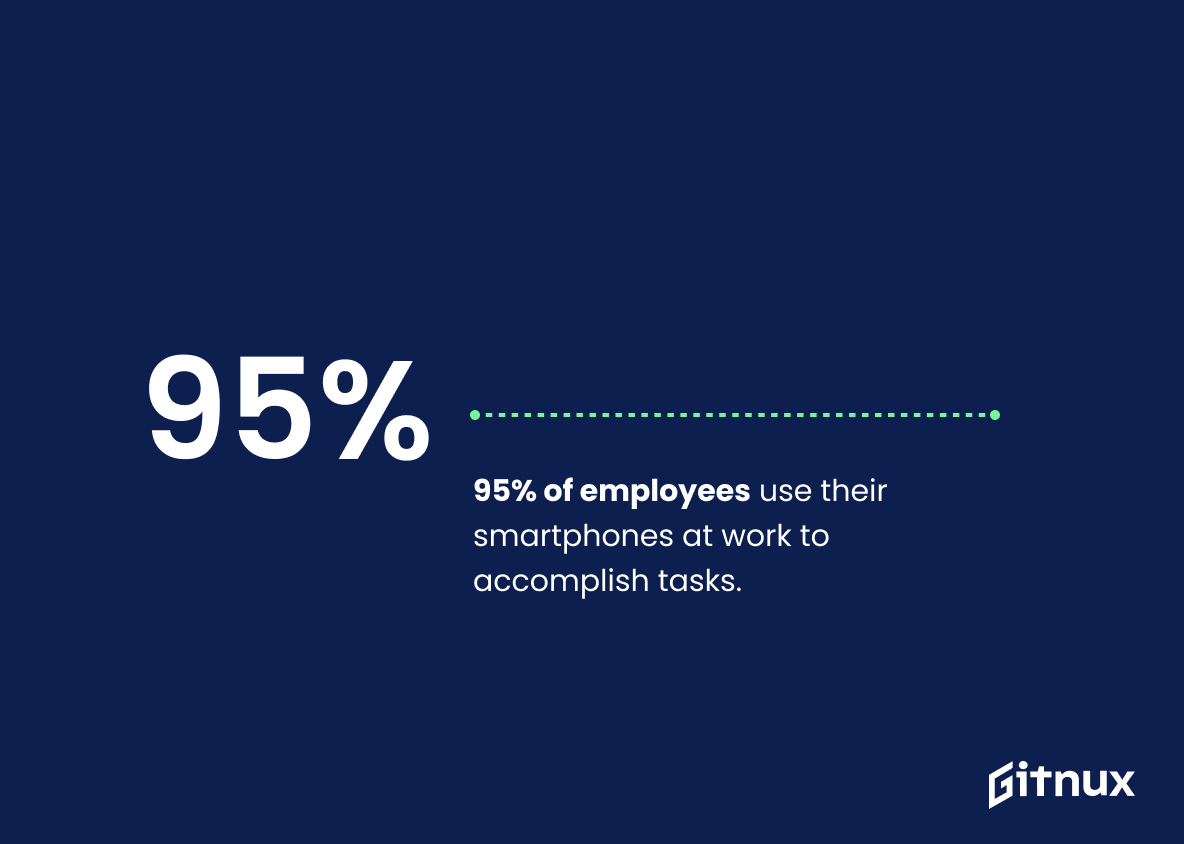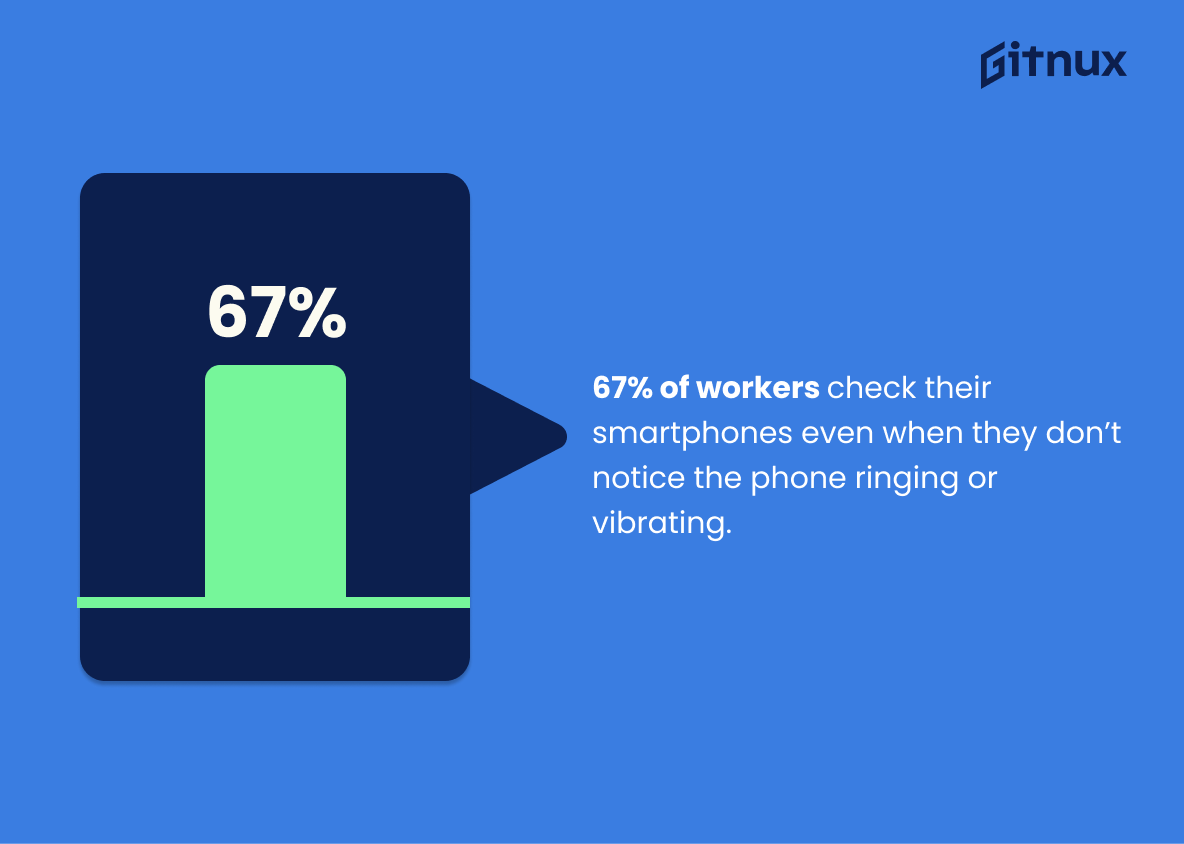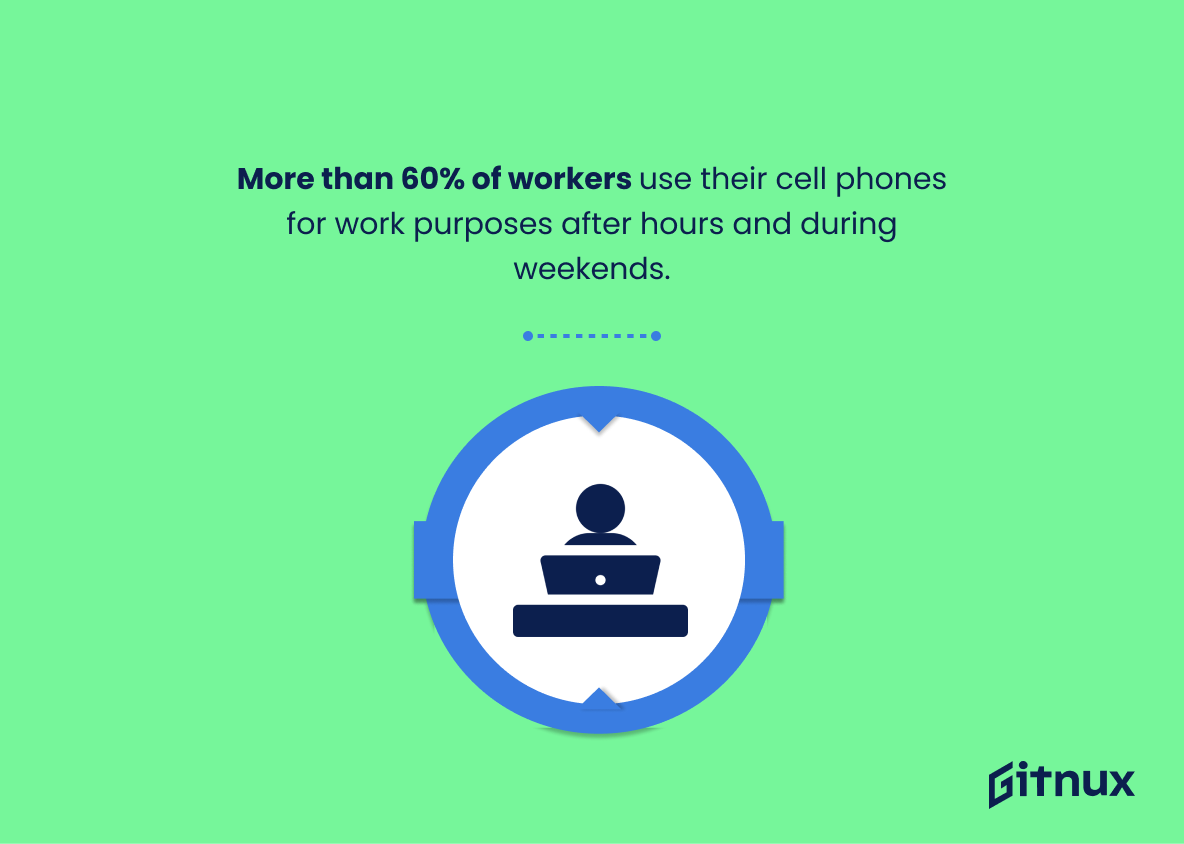As technology advances, so does the way we communicate and stay connected. Cell phones have become an integral part of our lives, but they can also be a major distraction in the workplace.
In this blog post, we’ll explore the latest statistics on cell phone distraction at work and discuss the implications for employers and employees. We’ll also look at ways to reduce cell phone distraction and increase productivity. So, let’s get started.
Cell Phone Distraction At Work: The Most Important Statistics
Workers spend an average of 2.5 hours daily accessing digital content unrelated to their profession, with half of them noting their employer has rules restricting phone use.
The average employee spends 5 hours a week on their phone during office hours for nonwork activities, costing $15.5 billion in lost productivity.
Cell Phone Distraction At Work: Statistics Overview
62% of U.S.-based workers agree that mobile phones or tablets play a key role in helping them be productive at work.
This statistic is significant in relation to statistics concerning the disruption caused by cell phone use at work, as it demonstrates that businesses are increasingly utilizing mobile devices to increase efficiency. This implies that the use of mobile devices in the workplace is not always a source of disruption.
Workers spend an average of 2.5 hours daily accessing digital content unrelated to their profession, with half of them noting their employer has rules restricting phone use.
This statistic is pertinent when considering Cell Phone Distraction At Work Statistics, as it reveals that even with regulations in place, employees are still devoting a considerable amount of time to their phones, which can be a major impediment to their job-related duties.
The average employee spends 5 hours a week on their phone during office hours for nonwork activities, costing $15.5 billion in lost productivity.
This statistic is noteworthy as it illustrates the considerable amount of time and money that is lost due to cell phone distraction in the workplace. It also emphasizes the requirement for employers to tackle this issue in order to maximize efficiency and productivity in the workplace.
We check our phones every 12 minutes, leading to long-term mental health issues.
This statistic emphasizes the importance of being conscious of our cell phone usage at work and the potential health risks that can come with overuse. It is vital to be aware of how much time we are spending on our phones and to take steps to reduce our usage in order to protect our mental wellbeing.
Only 15% of employees say that they use their mobile phones only for work during working hours and only for private purposes in their free time.
It appears that people are using their mobile phones for non-work related activities while at work, with 80% of respondents reporting that they do so with varying frequency. However, only 59% of respondents reported using their phones for work-related matters during holidays or public holidays, and 70% said they do work on weekdays, but not during working hours.
Nearly 28% of the workers questioned admit that they use social media at work. Employees spend 56 minutes per day using their mobile phones for non-work-related purposes.
It is no secret that mobile phones are a significant distraction in the workplace. An average employee spends around an hour daily on personal cell phone activities. The likelihood that they will make a mistake at work increases by 23% when they receive a text message, regardless of whether they have read it immediately.
There is a 28% increase in the probability of an employee making an error after getting a phone call and an increase of 23% after getting a text.
Research has revealed that simply hearing or feeling a notification on a mobile phone can lead to the same rate of mistakes. Mobile phones have had a major effect on both professional and personal life, and, like any other tool, they can be used for either beneficial or detrimental purposes.
Supplementary Statistics
69% of U.S. workers use their smartphones to access the internet while at work.
The majority of workers are using their phones to access the internet while on the job, which can be a major source of distraction. This statistic is a key piece of evidence in understanding the scope of the problem of cell phone distraction in the workplace.
55% of workers admit to using their cell phones during working hours for non-work related purposes.
A majority of workers are engaging in activities unrelated to their job during working hours, which can lead to decreased productivity and efficiency. This statistic is an important reminder of the need for employers to take steps to reduce cell phone distraction in the workplace.
Roughly 66% of US workers feel that their productivity has decreased due to cell phone usage at work.
The majority of US workers are feeling the effects of cell phone distraction, and that it is having a significant impact on their ability to get work done. This statistic is an important piece of evidence that can be used to support the argument that cell phone usage should be limited in the workplace in order to maximize productivity.
44% of workers have used their mobile phones during formal meetings.
A significant portion of workers are not able to resist the temptation to use their phones during formal meetings, which can be detrimental to productivity and collaboration.
The average American employee checks their phone 80 times per day while at work.
This paints a vivid picture of how often employees are checking their phones, and how much of their workday is being taken up by this activity. It is a powerful illustration of the need for employers to take steps to reduce cell phone distraction in the workplace.
95% of employees use their smartphones at work to accomplish tasks.
The majority of employees are relying on their smartphones to get their work done, which can be both a blessing and a curse. On one hand, it can make employees more productive and efficient. On the other hand, it can be a major source of distraction and can lead to decreased productivity. This statistic is an important reminder that employers need to be aware of the potential for cell phone distraction in the workplace and take steps to mitigate it.
67% of workers check their smartphones even when they don’t notice the phone ringing or vibrating.
Even when workers don’t consciously notice their phones ringing or vibrating, they still feel compelled to check them. This speaks to the power of cell phone addiction and how it can interfere with productivity and focus in the workplace.
More than 60% of workers use their cell phones for work purposes after hours and during weekends.
Even when employees are not on the clock, they are still using their phones for work-related activities. This highlights the need for employers to be aware of the potential for cell phone distraction and to take steps to ensure that employees are not using their phones excessively during work hours.
Employees who use their smartphones at work for personal use spend around 56 minutes per day on such distractions.
This highlights the potential for productivity to be significantly reduced when employees are distracted by their phones, and serves as a warning to employers to be aware of the potential for such distractions to occur.
39% of employees feel the smartphone is the greatest time-wasting tool at work.
There is a need for employers to be aware of the potential for employees to be sidetracked by their phones, and to take steps to ensure that this does not become a problem.
A study found that workers who use their cell phones at work experience higher levels of cognitive overload and increased stress.
Using cell phones while on the job can lead to increased stress and cognitive overload, which can have a negative impact on productivity and job satisfaction. This is an important point to consider when discussing the issue of cell phone distraction at work, as it emphasizes the need for employers to take steps to reduce or eliminate this type of distraction.
75% of employers believe that the use of cell phones interferes with productivity.
The majority of employers recognize the potential for cell phones to be a distraction and are taking steps to limit their use in the workplace. This statistic is important to consider when discussing the issue of cell phone distraction at work, as it provides a clear indication of the seriousness with which employers view the issue.
Approximately 90% of employees admit to using their smartphones during working hours for non-work purposes.
The majority of employees are engaging in activities unrelated to their job during working hours, which can lead to decreased productivity and efficiency. This statistic is an important indicator of the need for employers to take steps to reduce cell phone distraction in the workplace.
40% of employees say that their smartphones ease their ability to balance work and non-work responsibilities.
Employees are using their phones to help them manage their work and personal lives, suggesting that employers should consider how they can use this technology to their advantage. This could include providing employees with access to work-related apps or allowing them to use their phones for work-related tasks. By doing so, employers can help their employees stay productive and better manage their work-life balance.
Almost 40% of workers think it’s rude to use a smartphone during a meeting, yet only 22% believe it is acceptable.
While many people recognize that using a smartphone during a meeting is rude, they are still engaging in the behavior. This highlights the need for employers to take steps to reduce cell phone distraction in the workplace.
Conclusion
In conclusion, cell phone distraction at work is a growing problem that can have serious implications for both employers and employees. The statistics show that it is a widespread problem and that it can lead to decreased productivity, increased stress, and even safety issues.
Employers should take steps to reduce cell phone distraction in the workplace, such as implementing policies to limit its use, providing training to employees, and using technology to monitor and manage its use. By taking these steps, employers can help ensure that their employees remain productive and safe while at work.
References
Nasdaq: “How Mobile Devices Became a Key Enabler of Productivity For Today’s Dynamic Workforce”, cited February 2023. (Source)
Techrepublic: “Survey: Smartphones distract employees for hours on end during the workday”, cited February 2023. (Source)
Marketwatch: “This is how long it takes to get regain your concentration after texting on your iPhone”, cited February 2023. (Source)
Theguardian: “The lost art of concentration: being distracted in a digital world”, cited February 2023. (Source)
Iacis: “The effects of using mobile and smart devices at work”, cited February 2023. (Source)
Perillon: “Mobile Devices in the Workplace: 40 Statistics You Should Know in 2023”, cited February 2023. (Source)
Zippia: “25 TRENDING CELL PHONES IN THE WORKPLACE STATISTICS [2023]: CELL PHONE USE IN THE WORKPLACE”, cited February 2023. (Source)
ZipDo, cited June 2023: Cell Phone Distraction At Work Statistics
